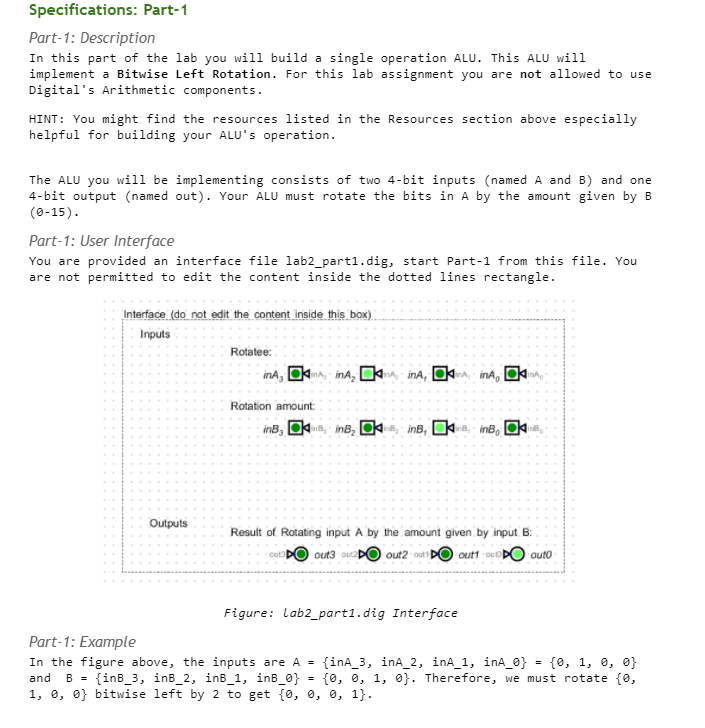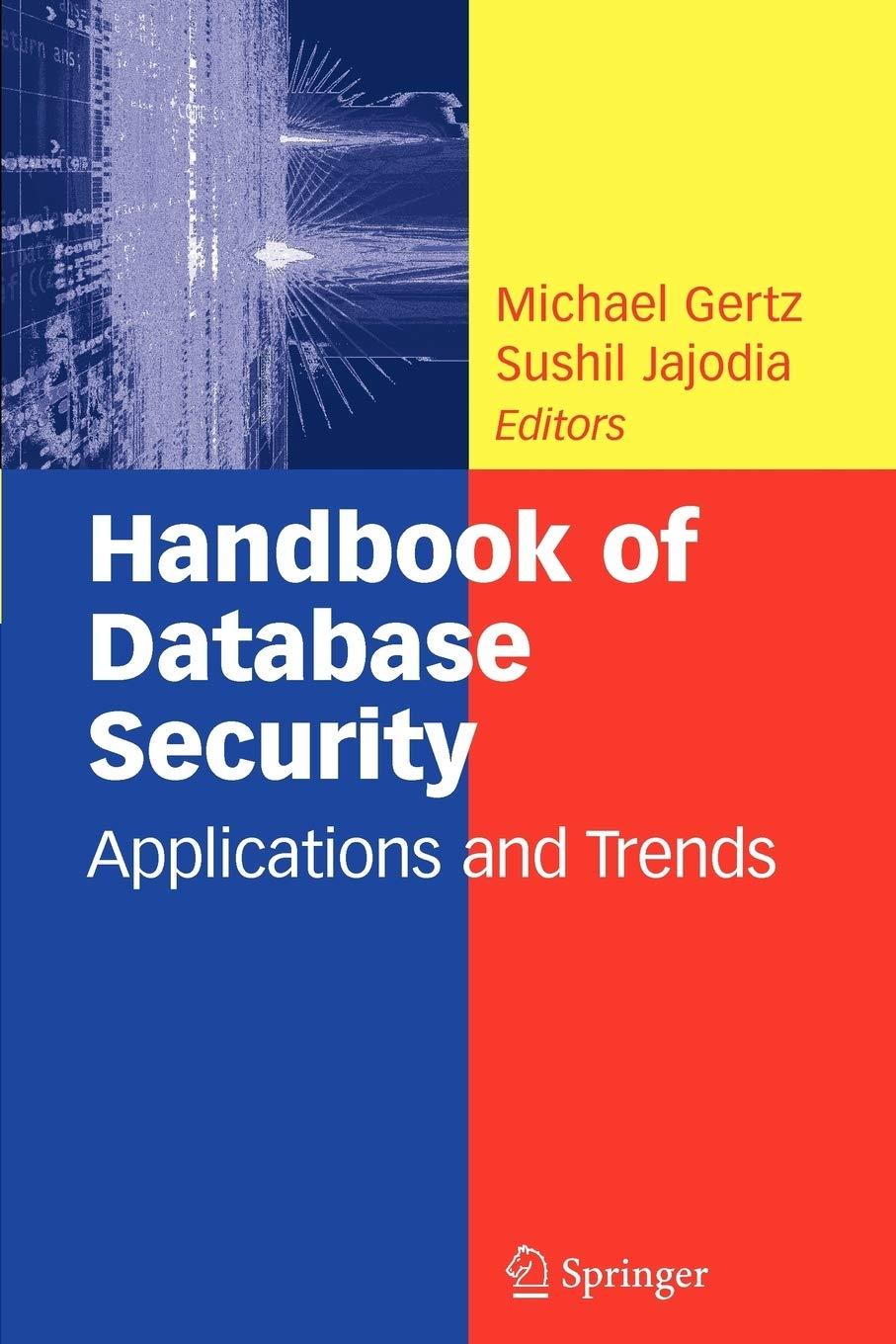Please teach me how to rotate the Alu and implements a bitwise left rotation~

a Specifications: Part-1 Part-1: Description In this part of the lab you will build a single operation ALU. This ALU will implement a Bitwise Left Rotation. For this lab assignment you are not allowed to use Digital's Arithmetic components. HINT: You might find the resources listed in the Resources section above especially helpful for building your ALU's operation. The ALU you will be implementing consists of two 4-bit inputs (named A and B) and one 4-bit output (named out). Your ALU must rotate the bits in A by the amount given by B (-15). Part-1: User Interface You are provided an interface file lab2_part1.dig, start Part-1 from this file. You are not permitted to edit the content inside the dotted lines rectangle. Interface (do not edit the content inside this box) Inputs Rotatee: ina, Dan, ina, ina, Dina, O Rotation amount inB, O, inB, O, ind, s, inB, Od Outputs Result of Rotating input A by the amount given by input B: Cut Out32DO Out2 out out Douto Figure: Lab2_parti.dig Interface Part-1: Example In the figure above, the inputs are A = {inA_3, inA_2, inA_1, inA_0} = {0, 1, 0, 0} and B = {inB_3, inB_2, inB_1, inB_@} {0, 0, 1, 0}. Therefore, we must rotate {0, 1, 0, 0} bitwise left by 2 to get {0, 0, 0, 1}. a Specifications: Part-1 Part-1: Description In this part of the lab you will build a single operation ALU. This ALU will implement a Bitwise Left Rotation. For this lab assignment you are not allowed to use Digital's Arithmetic components. HINT: You might find the resources listed in the Resources section above especially helpful for building your ALU's operation. The ALU you will be implementing consists of two 4-bit inputs (named A and B) and one 4-bit output (named out). Your ALU must rotate the bits in A by the amount given by B (-15). Part-1: User Interface You are provided an interface file lab2_part1.dig, start Part-1 from this file. You are not permitted to edit the content inside the dotted lines rectangle. Interface (do not edit the content inside this box) Inputs Rotatee: ina, Dan, ina, ina, Dina, O Rotation amount inB, O, inB, O, ind, s, inB, Od Outputs Result of Rotating input A by the amount given by input B: Cut Out32DO Out2 out out Douto Figure: Lab2_parti.dig Interface Part-1: Example In the figure above, the inputs are A = {inA_3, inA_2, inA_1, inA_0} = {0, 1, 0, 0} and B = {inB_3, inB_2, inB_1, inB_@} {0, 0, 1, 0}. Therefore, we must rotate {0, 1, 0, 0} bitwise left by 2 to get {0, 0, 0, 1}







